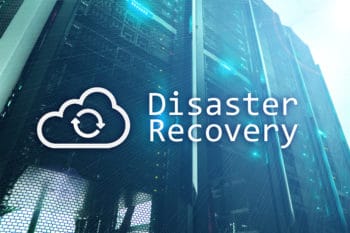Disaster Recovery Planning Tips

Conduct a Risk Assessment
One of the first steps in organizing a disaster recovery plan is defining the risks to your business. Many risks are common to all businesses: power loss, theft, and fire. But some threats are unique to your organization. For example, if your office is in a low-lying area and close to a major waterway, the threat of flooding is always prevalent. Define all potential risks to your business and how they may impact your recovery efforts.
Designate Roles
During a disaster, time is of the essence. To minimize chaos, define roles and responsibilities ahead of time. Decide who will communicate with staff, customers, emergency services providers, and the media. Gather pertinent contact information, including alternate phone numbers and email addresses, and make sure it’s accessible from off-site.
Assign an Alternative Workplace Location
A designated co-location enables your business to resume operations if your primary facility is out of commission. Your recovery time objective (RTO) and budget will help you determine what co-location option to use, whether a cold site, warm site, or hot site.
Back Up Your Data
Backup data is the foundation for a disaster recovery plan, but maintaining and managing an internal backup strategy often requires expensive in-house IT infrastructure and staffing.
An E-Vaulting service offers a low maintenance solution for supplementing your disaster recovery plan. Your data is digitally encrypted and transferred online to an electronic vault. In the event of a disaster, your data is deployed to your business location or an alternate hot site of your choice.
Go Off-Site
Protection of hard copy documents is often overlooked in disaster recovery plans. But considering the volume of legacy data contained within record retention inventories and the vulnerability of paper documents, protecting them is a must.
Disaster recovery and data security experts recommend storing archival paper records off-site. Choose a commercial records center that meets National Fire Protection Agency (NFPA) and State of California Department of Public Health (CDPH) standards. It should feature advanced climate control, security, and fire suppression systems designed to protect and preserve your documents long term.
Keep Your Plan Up to Date
Making a disaster recovery plan is only part of the solution; keeping it up to date as your business grows and evolves is critical. Don’t wait for a disaster to strike before putting your plan into action. Test your disaster recovery plan at least every six months to assess its effectiveness and apply revisions and improvements as needed.
For more disaster recovery planning tips, please call us at 800-685-9034 or complete the form on this page.
Pacific Records Management provides records management and data protection solutions for businesses throughout Fresno, Stockton, Sacramento, Modesto, and Napa and Solano Counties.
